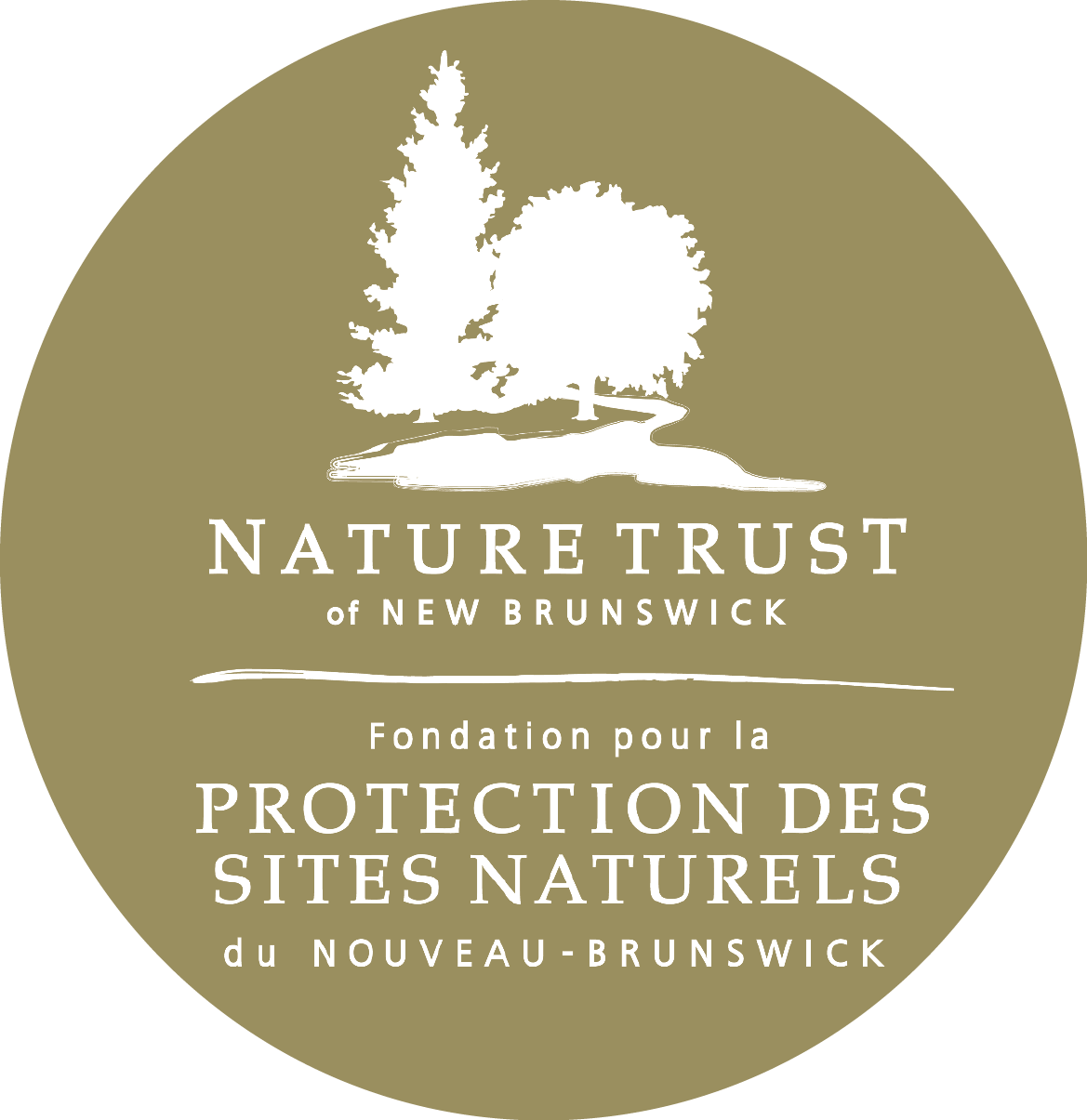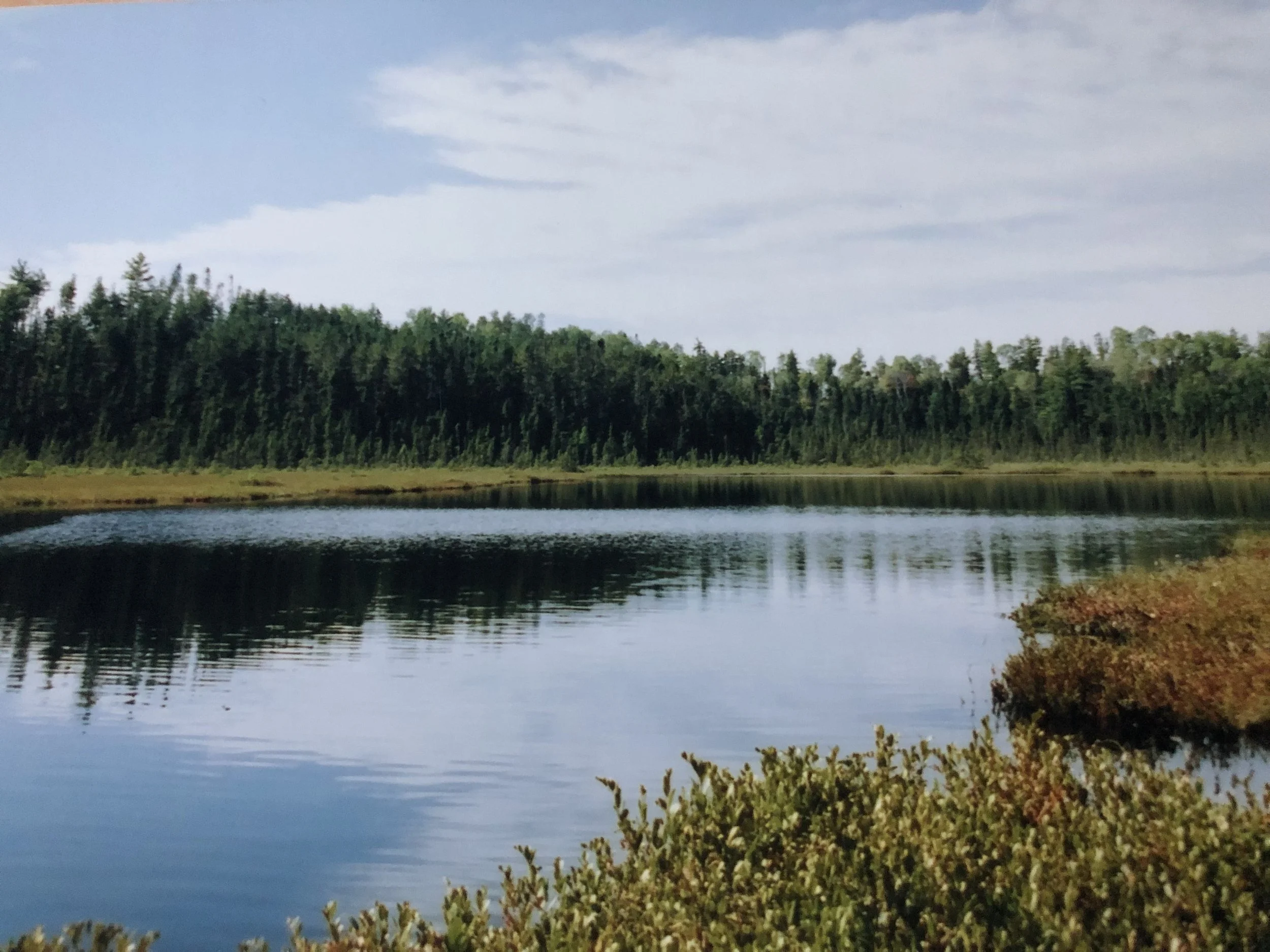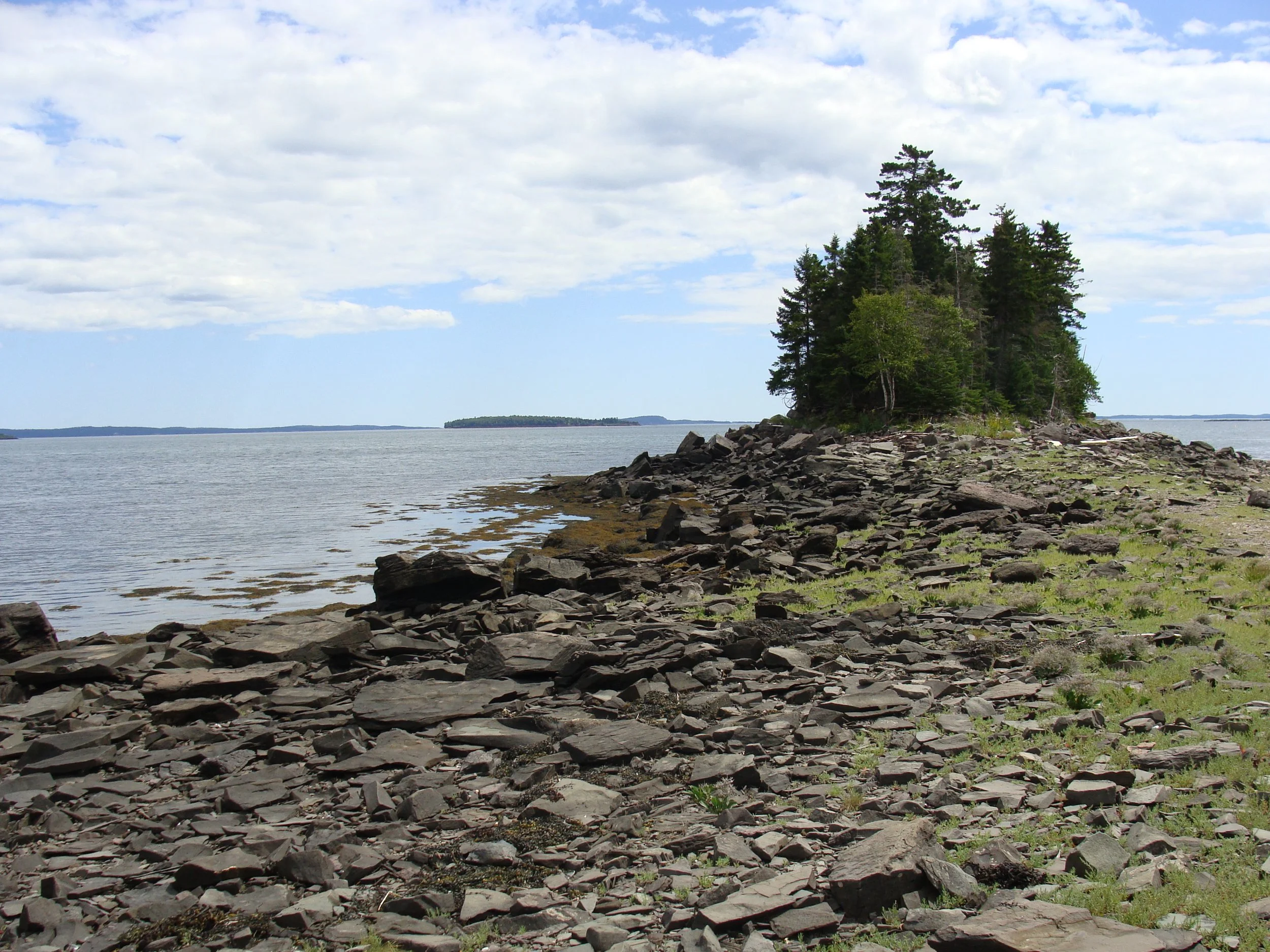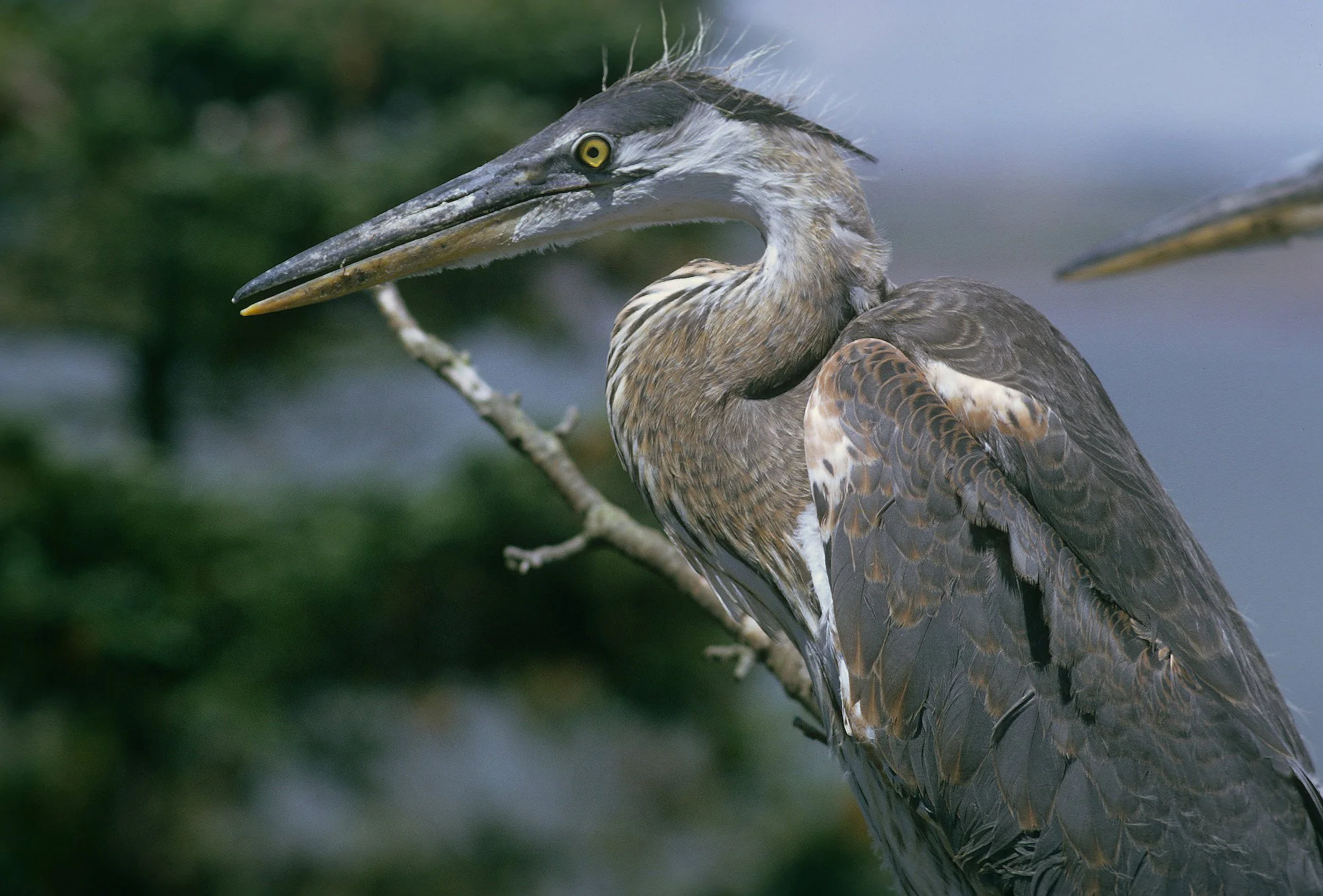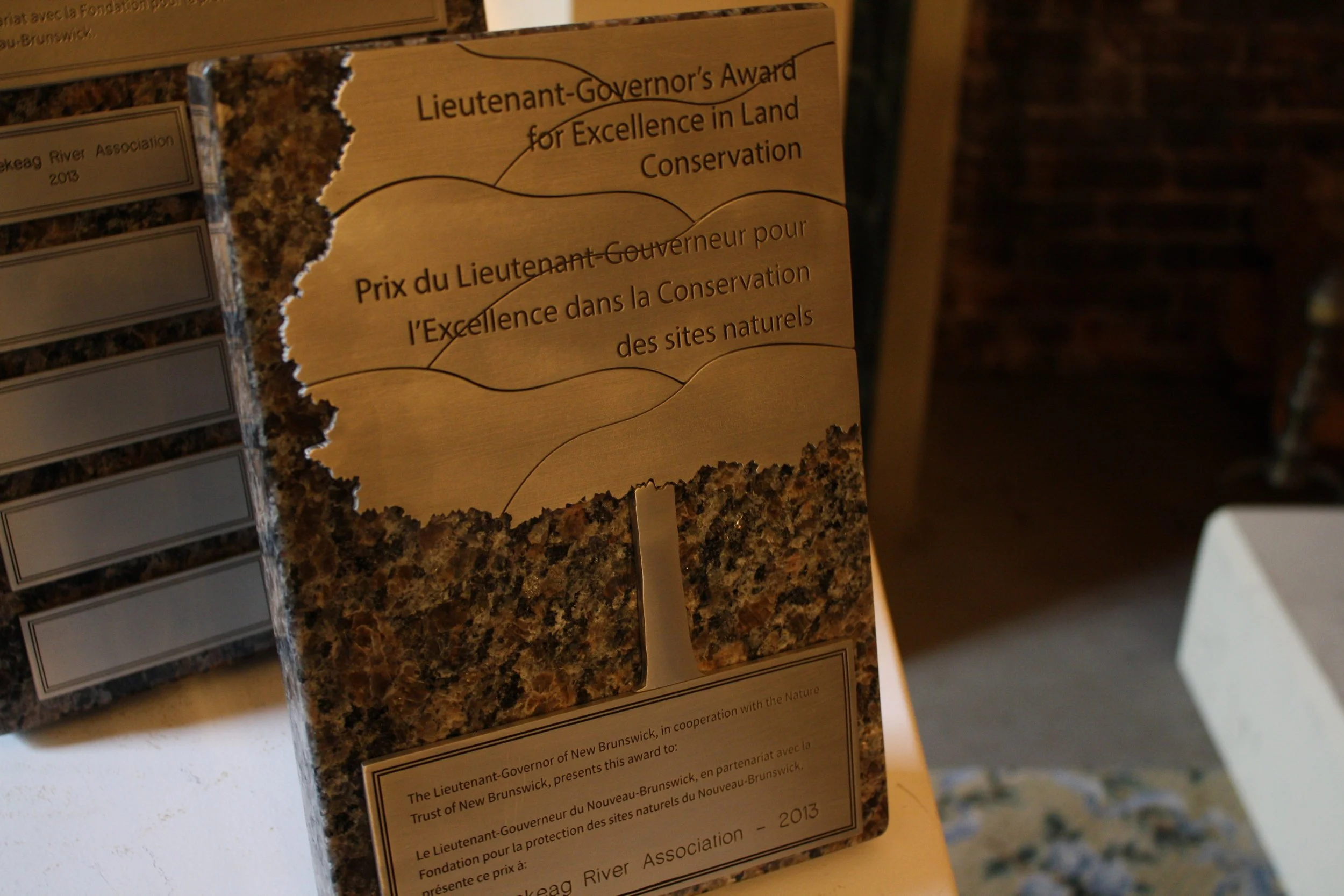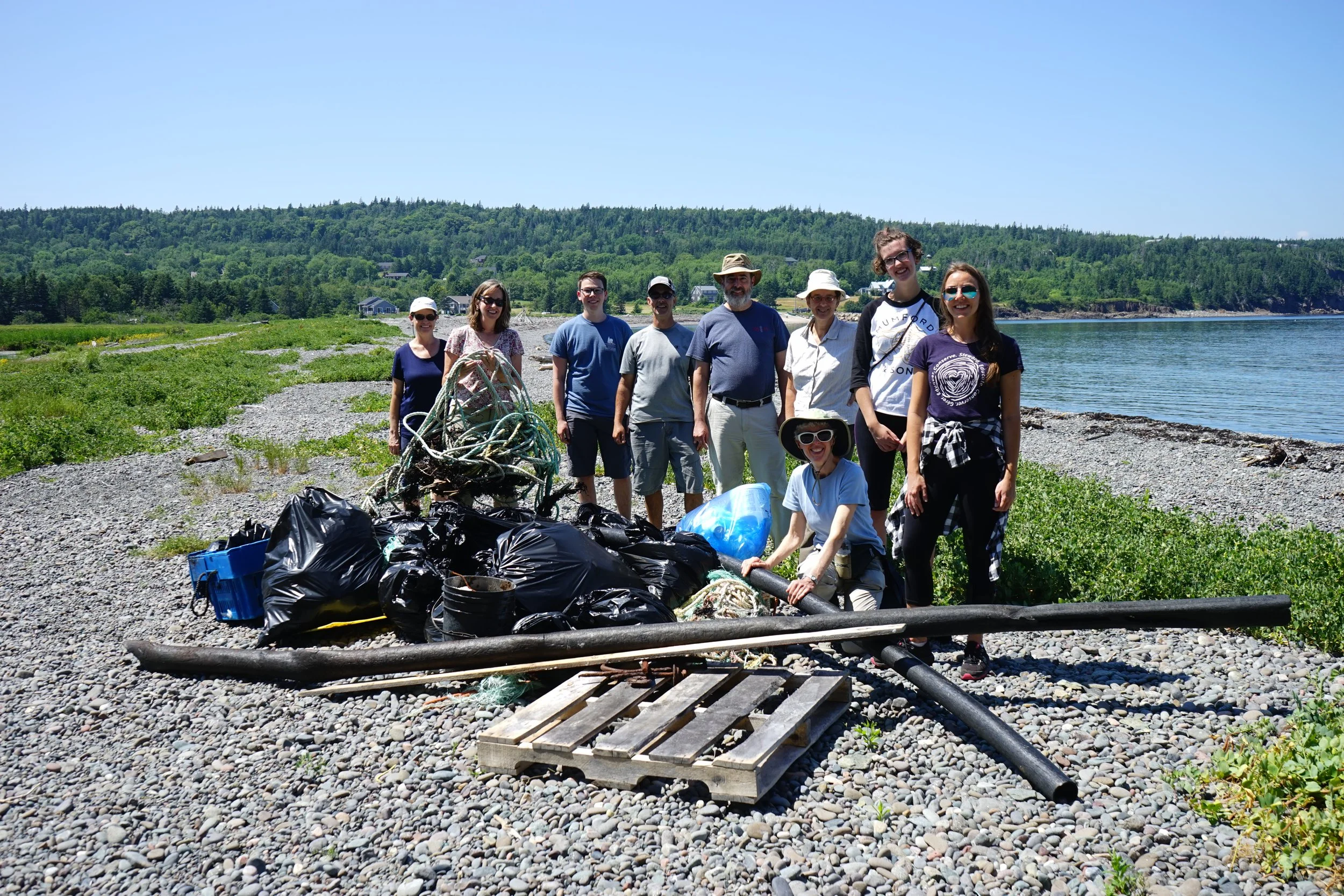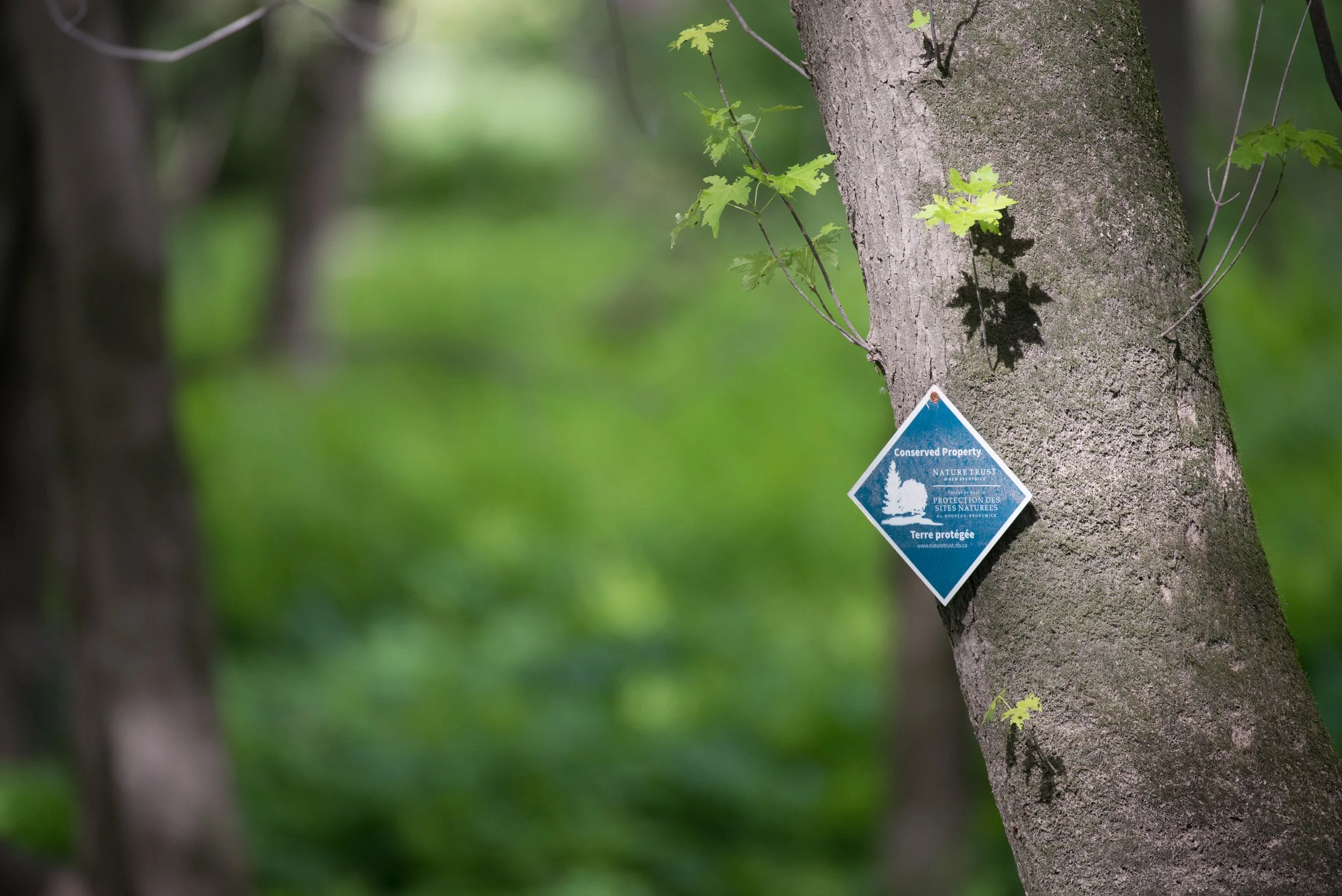The seed that grew into today’s Nature Trust was planted in 1985 by the late Harold (Hal) R. Hinds, then Curator of the Connell Memorial Herbarium at the University of New Brunswick (UNB). It was cultivated in the minds of several citizens, including Dr. C. Mary Young, Dr. Dorothy Farmer, Dr. Leo Dionne, Peter Pearce, Jane Tarn, Erica Gregg, Mary Pacey, Jim and Kay Bedell, Senator Muriel Fergusson, and Franklin Gilmour to name a few.
The founding group gathered information and published their first piece of literature in 1988 entitled Critical Natural Areas of New Brunswick. During this work, it became increasingly apparent that the protection of these sites was the next step. With the assistance of staff from the UNB Faculty of Law, a constitution was created, and in 1987, The Nature Trust of New Brunswick Inc. – La Fondation pour la protection des sites naturels du Nouveau-Brunswick Inc.was incorporated.
1988
The first conservation successes
In 1988, the Nature Trust acquired its first property at Shea Lake Nature Preserve near Plaster Rock, through a lease from Fraser Inc. (now known as Acadian Timber). The protection of this property was significant due to its 151 hectares of old-growth forest, which house 17 species of orchid.
It was soon followed with multiple donations by Robert K. (Bob) Stewart, including Little Mowat Island and an easement on three other islands (Barnes, Mowat, and Nubble Islands). These donations are now referred to as the Western Isles Nature Preserve – A Stewart Family Preserve.
1991
Publications
In 1991, the print newsletter Refuge was published for the first time with support from the Themadel Foundation of St. Andrews. Since then, the Nature Trust has published Refuge print newsletters each year to provide an update of the projects and successes of the Nature Trust. Though it has gone through different designs throughout the years, the Refuge took on a modern design fit for the 21st century in 2018.
1995
Our First Urban Nature Preserve
Within the city limits of Fredericton lies one of the few places in New Brunswick where the gray tree frog (Hyla versicolor) makes its home. In the early 1990s, wildlife photographer and herpetologist Don Vail observed the diverse biotic population thriving within the park and began rallying support for the area to become protected.
In 1995, the Nature Trust entered into a lease agreement with the City of Fredericton “to protect and preserve the gray tree frog (Hyla versicolor) and its habitat for future generations.”
Since becoming a protected area, Hyla Park Nature Preserve has received status and bragging rights as the First Amphibian Park of Canada. It has been featured in the pages of National Geographic Magazine.
1997
Appalachian Hardwood Forest (AHF) Project
In 1997, the Nature Trust began to locate and survey 65 patches of Appalachian Hardwood Forest that retained some level of conservation significance. The pieces ranged in size from smaller than a hectare to more than 100 hectares. They were scattered throughout Carleton and Victoria counties. Despite severe fragmentation, these mature remnant patches maintained a diverse array of ground flora species, including thirty-five provincially uncommon, rare or very rare plant species.
Locating and surveying land with conservation significance was an essential step toward protecting the Appalachian Hardwood Forest. The next steps were to develop and carry out a landowner and public awareness campaign, including Annual Wildflower Walks and school presentations. The Nature Trust also assisted the permanent protection of AHF sites in Woodstock (Beardsley Hill Nature Preserve and Hal Hinds Forest), and the Meduxnekeag River Association’s Bell Forest.
1998
The Big 10
The Nature Trust celebrated its 10th anniversary of protecting ecologically significant properties in New Brunswick and managed to establish its 10th nature preserve in the same year, which is the Caughey-Taylor Nature Preserve.
The preservation of Caughey-Taylor began with a generous donation by residents of the Bocabec area in 1998. Shortly after, the neighbouring property was protected, which included a part of shoreline along Sam Orr’s Pond and a large active beaver pond and meadow.
1999
The Long Island Conservation Project
This multi-year initiative was aimed at securing and managing land on Long Island for future public access, open space, and conservation. The Nature Trust of New Brunswick, in a joint undertaking with the Atlantic Coastal Action Program Saint John, formed the Long Island Committee, a group of volunteers committed to securing and protecting significant portions of this landmark for the future.
In 1999, the Nature Trust began a public outreach and education campaign, which resulted in two donations, one from Diana Rayworth and the other from Colin B. Rayworth. These parcels formed the basis of the present-day nature preserves: Minister’s Face and Rayworth Beach Nature Preserves.
In the following years, other properties have been added to the original preserve. In 2018, a total of 117.36 acres of Long Island had been protected by the Nature Trust.
2003-2005
Raising Awareness
Over the years, several events had been created to raise funds and awareness of Nature Trust projects. These included the New Brunswick Land Conservation Conference, workshops on rare plants, and fundraising events like the “Climb-a-Thon” to raise funds for Peregrine Falcon conservation.
The peregrine falcon (Falco peregrinus) is a Species at Risk that is recognized federally to be of ‘special concern’ and is recognized provincially as ‘endangered.’ In New Brunswick, there are approximately 15 known nesting sites for the peregrine falcon, which had increased since the 1990s when there were only about five known sites.
In 2005, the Nature Trust initiated a project to contact landowners who were either hosting or living within the vicinity of peregrine nesting sites. Partnerships with private landowners are essential to conserve habitat for the peregrine falcon. With their help, the Nature Trust has been successful in protecting four known nesting sites and two potential nesting sites.
2007
Campaign for Coastal Land
In 2007, the Nature Trust established the Campaign for Coastal Land initiative to protect the ecologically significant Fundy coast that supports a variety of habitats and species. A goal was set to preserve historical and ecological gems for the benefit of all, with particular focus on Navy Island and Sam Orr’s Pond, which was partly protected at the time.
This goal was achieved by working with landowners to create the Navy Island Nature Preserve in St. Andrews and doubling the size of the Caughey-Taylor Nature Preserve. With significant funding from the Nature Conservancy of Canada through the Government of Canada’s Natural Areas Conservation Program, a total of 379 acres (153 ha) of coastal habitat and 3 km of coastline spread out over eleven parcels of land has been secured.
The project also increased coastal land protection in the Charlotte County region. Thanks to the generosity of the Connors Bros. Clover Leaf Seafood Company, the South Wolf Island Nature Preserve, in the Bay of Fundy, and the Connors Bros. Nature Preserve at Pea Point, in the Village of Blacks Harbour, were both protected.
2008
The Great Blue Heron Nesting Platform Project
The Nature Trust built nesting platforms for great blue herons on the Manawagonish Island Nature Preserve, a windswept island off Saints Rest Beach in Saint John.
This project was established because the island is an ideal nesting location for these large birds due to its proximity to foraging grounds at Saint’s Rest Marsh. Historically, herons would migrate from one nesting location to another as trees died, but with the development of wild and coastal areas, there are fewer spots for herons to go.
The result was 20 new and secure nesting surfaces for Great Blue Herons to build their stick nests. This project was a success, and as of summer 2013, 14 of the 20 platforms are being used by the great blue herons.
2011
Green Futures Challenge Dialogue
The Nature Trust led a Green Futures Challenge Dialogue, an event that clearly identified the need for New Brunswick citizens to become more aware of conservation. The Dialogue helped shape public engagement projects, including the New Brunswick Youth in Nature Campaign and the Nature of ART in Nature. The goals of these campaigns were to promote engagement from youth, ages 15-35 and tap into their passion for exploring nature.
This resulted in music videos with New Brunswick artists performing at various nature preserves, and a collection of nature-inspired art, that was displayed at the museums and centres in two cities.
2012
Lieutenant-Governor’s Award for Excellence in Land Conservation
In 2012, the Lieutenant-Governor’s Award for Excellence in Land Conservation was established to mark the Nature Trust’s 25th anniversary. The award was created to recognize individuals making significant contributions to the protection of natural heritage through land conservation in New Brunswick.
Mary Majka, one of Canada’s great pioneering conservationists, was the first recipient of the inaugural award.
2013
Conservation on Canvas
In September 2013, Woodstock artist and art educator Michael McEwing approached the Nature Trust with a unique idea to promote conservation through natural beauty. The goal was to visit Nature Trust nature preserves and create a series of paintings inspired by his adventures and experiences.
The project spanned four years, and in 2017 Michael completed his last painting for a total of 33. The exhibition opened at the New Brunswick Museum on October 5 to much acclaim. It remained until January 2018 when it went on a province-wide tour.
2014
ExploreEco NB Mobile App
The ExploreEcoNB App was launched in 2014 as a cutting-edge application to promote New Brunswick’s natural spaces. It featured over 300 natural spaces to explore, in collaboration with nine other provincial partners, and information about various trails and activities, as well as volunteer opportunities.
This first version was named runner-up for the CATA Alliance’s Ericsson Award and was downloaded around 600 times.
The partners included Nature NB, NB Trails, Parks Canada, Parks NB, the Government of New Brunswick, the Nature Conservancy of Canada, the Conservation Council of NB, the Meduxnekeag River Association, and the Canadian Parks and Wilderness Society of NB.
2015
Grand Tour Event Series
The Nature Trust embarked on its first-ever ‘Grand Tour’ event series, visiting more nature preserves in one season than ever before. Along the way, stewardship staff and board members aimed to engage the local communities in the process, creating awareness of conservation efforts in the province and providing people with opportunities for hands-on volunteerism.
The Grand Tour took place between June and September, and a total of 21 nature preserves were visited—almost half of the Nature Trust’s conserved lands.
2016
The Great Fundy Coastal Cleanup
The Nature Trust led the first Great Fundy Coastal Cleanup in 2016, a substantial one-day event that tackled marine debris at over 10 coastlines and raised public awareness. Volunteers were crucial in this undertaking by choosing a site to help clean and collect garbage. As well as cleaning debris, the volunteers helped to categorize it and collect data on it. This data was sent to the Huntsman Marine Science Centre in St. Andrews, where it joins a worldwide database for researching ocean pollution.
Since the early 1990s, the Nature Trust has been organizing cleanup events for their nature preserves in the area, which eventually became an annual occurrence.
As an annual cleanup, the Nature Trust works hard every year to broaden the cleanups’ reach. The goal is to continue to expand and raise awareness of the marine debris issue and provide individuals with a chance to be involved in marine stewardship action.
Revival of the Appalachian Hardwood Forest Conservation Project
The Appalachian Hardwood Forest Conservation Project, originally initiated in 1997, identified 65 distinct remnants of this rare forest type nestled within the central Wolastoq/St. John River Valley. After a period of pause since 2002, the project made a resurgence in 2016, maintaining its core aim to conserve these unique forest patches through strategic land acquisitions and voluntary stewardship. The Nature Trust actively liaises with essential landowners possessing high-priority Appalachian Hardwood Forest sites, committing to a long-term vision of stewardship and site preservation. More than 100 sites have been recognized so far in this ongoing project, facilitated via the Conservation Partner Program.
2017
Full Circle
The Nature Trust celebrated its 30th anniversary as an incorporated charitable land conservation organization. The 50th nature preserve was also protected in the same year, which is now known as the Margaret Coburn Cameron Woods Nature Preserve.
As shown by this historical journey, the past 30 years have been full of events, projects, and conservation successes. The protection of ecologically significant land in the rich province of New Brunswick could not happen without the fantastic support and dedication of its staff, board, volunteers, like-minded organizations, and the New Brunswick community.
2018
Moving on up
Before 1992, all Nature Trust work was done on a volunteer basis and in private homes and offices. This was until Hal Hinds was able to obtain office space in the old Muskeg Research Institute Building on the University of New Brunswick campus in Fredericton.
This served as the official office for over two years until April 1994 when the Nature Trust relocated to an office on Queen Street. By 2001, the Nature Trust had continued to grow and eventually moved down the hall to offices at 404 Queen Street. After 16 years at this location, the Nature Trust relocated to a spacious office above Isaac’s Way at 649 Queen Street, Fredericton, in Summer 2018.
2019
Passport to Nature
The Nature Trust launched the Passport to Nature to engage New Brunswickers of all ages in a variety of environmental activities on nature preserves across the province. It was a success right out of the gate, with 40 educational events offered in the inaugural year!
From 2020-2022, during the height of the COVID-19 pandemic, the Passport to Nature initiative moved to a digital format, allowing people from different parts of the province to attend events from a distance. The program offered webinars with local experts in the environmental field and encouraged participants to use the skills they learned to explore local outdoor spaces with their loved ones safely. You can watch past webinars here.
In 2023, in-person Passport to Nature events resumed with a focus on connecting people with the arts in the wonders of nature. Events such as a Haiku Hike, Knitting with Nature, and Painting the Preserve invited New Brunswickers of all artistic skills to create something special in the beaty of our nature preserves. Learn about current events here.
2020
Conserve Y(our) New Brunswick: Protect the Places You Love Campaign
As the COVID-19 pandemic hit in 2020, the Nature Trust adapted to new operational realities such as virtual meetings, working remotely, and lockdowns, while continuing to make important strides in land conservation in New Brunswick.
That year, we launched the Conserve Y(our) NB: Protect the Places You Love Campaign, setting the ambitious goal of raising $10 million and protecting 15,000 acres of land in New Brunswick by the year 2030. The campaign was launched in response to the province-wide target announced in October 2019 to conserve 10% of New Brunswick’s lands and waters.
In the first year of the Conserve Y(our) NB campaign, we conserved an astounding 1,141 acres of ecologically-significant land, which, at the time, brought the amount of land the Nature Trust protects to more than 9,000 acres. Five new properties were preserved, and two existing nature preserves were extended.
2021
10,000 Acres Milestone
The Nature Trust celebrated the milestone achievement of reaching more than 10,000 acres of conserved land in New Brunswick! What’s more, in one of the most significant conservation efforts to date, the Nature Trust raised $1,400,000 and protected more than 1,300 acres of ecologically-significant land throughout the province in a single year. The newly protected areas included the Keiko & Errol Nature Preserve, a 920-acre (372-hectare) nature preserve on Ross Island off Grand Manan.
The conservation of these new nature preserves was thanks to the continued success of the Conserve Y(our) NB campaign.
Ambassador Program Launch
We also launched our Ambassador Program in 2021, offering free, informative, and hands-on workshops designed to build volunteer skills in four key focus areas: trail maintenance, species identification, boundary monitoring, and habitat restoration. By participating in virtual training webinars and hands-on volunteer events, participants earn certification in each area of the programs and gain the tools needed to participate in the stewardship of our growing network of nature preserves or steward their own property for conservation.
2022
Strategic Conservation Planning
We developed our first five-year Conservation Plan to ensure that the Nature Trust takes a science-based and strategic approach to preserving New Brunswick’s special natural spaces. The plan was informed by ecological data as well as the overall objectives of enhancing Indigenous and Francophone community engagement.
The Conservation team will develop implementation strategies for each of the Planning Regions outlined in the Conservation Plan to ensure its full and informed execution.
By the end of 2022, we surpassed our 11,000 acres-protected milestone, conserved 14 beautiful and unique nature preserves and conservation easements, and expanded six existing nature preserves, bringing our nature preserve total to more than 75!
2023
Environment and Climate Change Canada Fund Projects
In 2023, the Nature Trust received funding from the federal government under Environment and Climate Change Canada’s Nature Fund, which supports conservation projects in Canada. This funding has gone toward many of the Nature Trust’s ongoing projects, including the Wolastoq/St. John River Priority Project, the Nature Smart Climate Solutions Fund, the Skutik Indigenous Protected Area Project, and Species at Risk (SAR) Conservation.
We also surpassed our 12,000 acres-protected milestone, now forever protecting a total of 79 nature preserves across New Brunswick!
